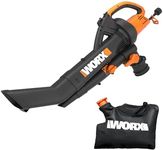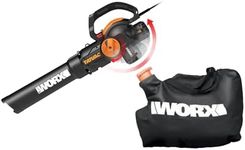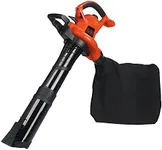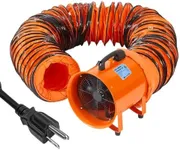Buying Guide for the Best Leaf Mulchers
Choosing the right leaf mulcher can make yard work much easier and more efficient. A leaf mulcher helps you reduce the volume of fallen leaves and other garden debris, turning them into useful mulch or compost. When selecting a leaf mulcher, it's important to consider several key specifications to ensure you get the best fit for your needs. Understanding these specs will help you make an informed decision and find a mulcher that suits your yard size, the type of debris you need to process, and your personal preferences for ease of use and maintenance.Power SourceThe power source of a leaf mulcher determines how it operates and its overall convenience. There are three main types: electric, gas, and battery-powered. Electric mulchers are lightweight, easy to start, and require less maintenance, making them ideal for small to medium yards. Gas-powered mulchers are more powerful and can handle larger yards and tougher debris but are heavier and require more maintenance. Battery-powered mulchers offer the convenience of cordless operation and are suitable for small to medium yards, but their runtime is limited by battery life. Choose based on the size of your yard and your preference for convenience versus power.
Mulching RatioThe mulching ratio indicates how much the mulcher can reduce the volume of leaves and debris. For example, a 10:1 ratio means the mulcher can reduce 10 bags of leaves into 1 bag of mulch. Higher ratios are better for reducing large volumes of leaves into a more manageable amount of mulch. If you have a large yard with many trees, a higher mulching ratio will be more efficient and save you time and effort. For smaller yards, a lower ratio may be sufficient.
CapacityCapacity refers to the amount of leaves and debris the mulcher can handle at one time. This can be influenced by the size of the hopper or the collection bag. Larger capacities mean you can mulch more leaves before needing to empty the bag or hopper, which is useful for larger yards or heavy leaf fall. Smaller capacities are easier to handle and may be sufficient for smaller yards. Consider the volume of leaves you typically deal with and choose a capacity that matches your needs.
PortabilityPortability is an important factor, especially if you need to move the mulcher around a large yard. Look for features like wheels, handles, and overall weight. Lighter, more portable models are easier to maneuver but may have less power. Heavier models with wheels can be easier to move around but may require more effort to transport. If you have a large yard or need to move the mulcher frequently, prioritize portability features.
Ease of UseEase of use encompasses several factors, including how easy it is to start, operate, and maintain the mulcher. Electric and battery-powered mulchers are generally easier to start and require less maintenance than gas-powered models. Look for features like easy-start mechanisms, simple controls, and easy-to-clean components. If you prefer a low-maintenance option, choose a model with fewer parts that need regular upkeep. Consider your comfort level with operating and maintaining garden equipment when making your choice.
Noise LevelNoise level is an important consideration, especially if you live in a neighborhood with noise restrictions or if you prefer a quieter operation. Electric and battery-powered mulchers are typically quieter than gas-powered models. If noise is a concern, look for models that are specifically designed to operate quietly. Consider the environment in which you'll be using the mulcher and choose a noise level that will be acceptable for you and your neighbors.
















